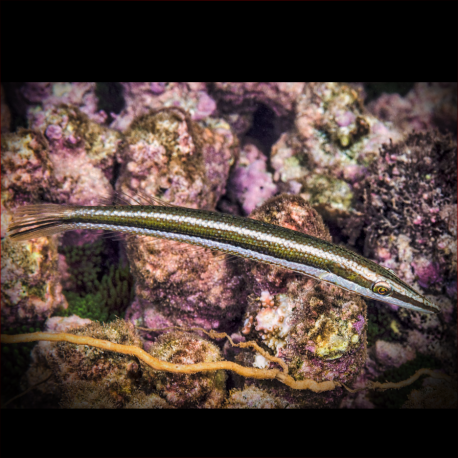More info
Datasheet
| Minimum Tank Size | 1500 litres / 396.26 US gallons |
| Maximum Size | 50.0cm / 19.69inches |
| Reef Compatible | Reef safe with caution |
| Temperament | Docile but might be aggressive towards similar species |
| Temperature | 22.2°C / 71.96°F - 25.6°C / 78.08°F |
| Specific Gravity | 1.020-1.025 |
| Carbonate Hardness | 8-12 |
| pH | 8.1-8.4 |
General Description
The Cigar wrasse, scientifically known as Cheilio inermis, is a member of the Labridae family and can grow up to 50.0cm in size. These fish are characterized by their sharpnose and vibrant colors, making them a visually appealing addition to aquariums.
Aquarium Suitability
Considered suitable for aquariums, the Cigar wrasse requires a tank size of at least 1500 liters due to their large size and active nature. They are known to acclimatize better as juveniles and benefit from a deep sandy substrate for burrowing.
Demands, Care, and Hardiness
The Cigar wrasse is rated as having average hardiness, requiring stable water conditions with a pH range of 8.1-8.4, a specific gravity of 1.020-1.025, and a temperature range of 22.2-25.6°C. They are docile fish but may exhibit aggression towards similar species.
Reef Suitability
Reef enthusiasts can keep the Cigar wrasse in their tanks with caution, as they are considered reef safe but may pose a threat to small crustaceans. These fish are known to jump out of open aquariums, so a secure lid is essential for their tank.
Aquarium Setup
When setting up a tank for the Cigar wrasse, it is important to provide ample space for them to swim and dig. A minimum of 5cm of sand substrate allows them to bury themselves, especially at night. Care should be taken when housing them with more aggressive tank mates.
Behaviour
The Cigar wrasse is described as shy and docile, requiring a peaceful environment to thrive. They have the ability to change gender, with females transitioning to males as needed. In captivity, these fish may lose color intensity, which can be addressed through a diet rich in pigmented foods.
Feeding and Diet
These wrasses have a varied diet that includes larger crustaceans like shrimp and crabs, small crustaceans such as krill and mysis, and zooplankton like cyclops and pods. Providing a diverse and high-quality diet aids in maintaining their health and vibrant coloration.
Dimorphism and Captive Reproduction
The Cigar wrasse exhibits multiple color variations, making identification challenging. In captivity, they have been known to reproduce, with hermaphroditic individuals changing gender from female to male as necessary.
Habitat and Distribution
Naturally found in the Indo-Pacific region from the Red Sea to as far as the Hawaiian and Easter Islands, the Cigar wrasse inhabits a range of marine environments. They prefer areas with sandy substrates where they can burrow and hide when needed.

